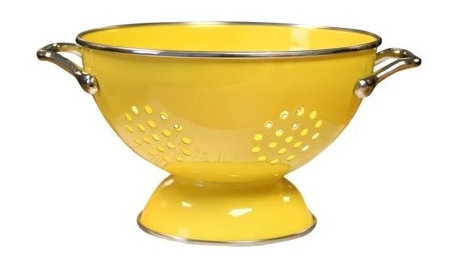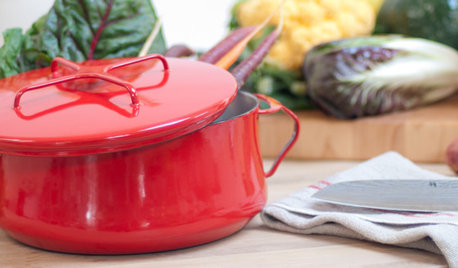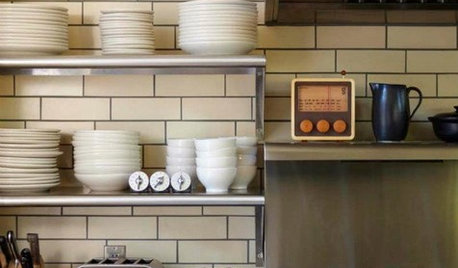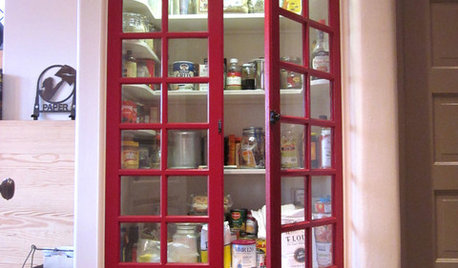Food stock variety
charitycomposter
9 years ago
Featured Answer
Sort by:Oldest
Comments (26)
barbararose21101
9 years agolast modified: 9 years agocharitycomposter
9 years agolast modified: 9 years agoRelated Discussions
Will more food be going extinct - 'Future of Food'
Comments (28)I am baffled because I have the opposite point of view entirely. Has anyone ever thought about what your ancestor Gunter in Germany was eating a thousand years ago? Probably cabbage, cabbage, cabbage, onions, garlic, barley, cabbage, pork, and turnips. How about Earnest in England?... pretty much the same. Far from food going extinct, I think there is tremendous diversity now in food production. Industrial production might require GM and capitalization of research through protection of intellectual property, but the fact remains that you are eating tomatoes, kohlrabi, six kinds of lettuce, two kinds of carrots, brussels sprouts, etc. All of those are robust and are grown as millions of mini varieties in gardens all over the world. I mean EVERYWHERE. Seed banks, seed companies, and people's dresser drawers hold huge stores of DNA, all slightly different. In five minutes, I could buy 100 different packets of seeds at the hardware store. Was that even possible in the 50s? And that is F1 or F2. Some okra farmer in Alabama has seeds produced through 50 crosses. People can and do create and study their own cultivars of darn near everything every season and then trade them internationally. How will that change? Activism is all well and good, but GM and Mxxxxxxo are small in the big picture and probably getting smaller. Remember that they have to invest millions in a cultivar just to get it to a commercial seed stage. How many cultivars can they do that with? And they and their timing are going to be wrong how often? Monsanto is not a juggernaut, it is a riverboat gambler. The bigger it gets, the bigger it bets. For better or worse, some gardener in China has a seed that is better than what Mxxxxxxo has got, and it is only a matter of time before the rest of the world finds out about it. In Japan, a single pumpkin seed can sell for hundreds of dollars. Mxxxxxxo has not moved in on that action, and it never will. The market is fuelled by enthusiasts and connisseurs. If the market gets cornered, people will immediately lose interest. Viewed in terms of sheer greed, it is in Mxxxxxxo's interest to maintain wild type specimens in environments all over the world. Even if Mxxxxxxo could sell one type of tomato seed that would make all others extinct, it would not do it. Has anyone considered that? Well, I guess that is enough. I could give 20 more examples. Viewed from a wider perspective, food diversity has never been better. And I will not be buying Mxxxxxxo stock. I should watch more TV, it sounds very entertaining....See MoreHow many varieties of food plants do you grow?
Comments (32)Okay, here's mine' Tomatoe - watermelon beefsteak Tomatoe - Hawaiin Pineapple Tomatoe - Stupice Green pepper - Ace Corn Bush Green beans Garlic Kale Mesclun mix Bokchoy Winter squash x 3 - Acorn, Pink banana, Butternut Cukes x 1 - straight 8 Carrots - Danvers Broccoli x 1 Onions x 1 Thyme x1 Marjoram x1 Basil x 2 Lavender x 2 Borage (to keep away the hornworms) Chives x 1 Highbush Blueberry x 4 Raspberries x 1 Red Potatoes x 1 Summer squash x 3 - Yellow, Pattypan, Zuccini Sweet Potato - Beauragard (sp)? 1st year and its in the greenhouse raised bed....See MoreScion Fruit Quality Depends on Stock Variety ?
Comments (5)Yes, it is definitely true. The rootstock variety influences the "strength" of the scion fruit flavor, especially the brix content (sugar concentration) and the degree of tartness (acid concentration). It does NOT affect flavor qualitatively -- by that I mean that if it's a mandarin, it will always taste like a mandarin, NOT picking up any flavor of grapefruit, lemon, or whatever roots you put it on. It is also true that grapefruit, used as a stock, tends to give its scion fruits a bland, watered-down flavor. Here's a list of some of the common rootstocks: Very best quality fruit in the scion: sour orange Poncirus trifoliata Excellent quality fruit in the scion: Swingle and some of the other citrumelos Cleopatra, Sun Chu Sha, and other mandarins (good flavor, but may cause some varieties to produce small fruit, which matures later in the season) Decent-good quality: Carrizo, Troyer, and other citranges Poor quality: rough lemon rangpur lime Very poor quality: C. macrophylla Abominable quality: grapefruit...See MoreFood, food, food, remember this old classic?
Comments (28)The kids and I LOVE Tuna Casserole. DH HATES it! We don't have it anymore, but now I am thinking the heck with him, I want it! LOL I make it like this. Cook a 8 oz bag of egg noodles. Drain and cool slightly. Put in casserole with 1 can tuna 1/2 cup Miracle Whip about 1 cup diced celery and 1/3 cup chopped onion 1/2 cup milk Mix all ingredients. Heat one can cream of celery soup and 1 cup shredded cheddar cheese until cheese is melted. Add to cooked noodle mixture. Salt and pepper it. Top with crushed potato chips. Bake at 425 about 20 minutes....See Moreequinoxequinox
9 years agolast modified: 9 years agochuckiebtoo
9 years agolast modified: 9 years agoorganican
9 years agolast modified: 9 years ago11otis
9 years agolast modified: 9 years agoequinoxequinox
9 years agolast modified: 9 years agohummersteve
9 years agolast modified: 9 years agonexev - Zone 8b
9 years agolast modified: 9 years agoorganican
9 years agolast modified: 9 years agohummersteve
9 years agolast modified: 9 years agomendopete
9 years agolast modified: 9 years agoequinoxequinox
9 years agolast modified: 9 years agoequinoxequinox
9 years agolast modified: 9 years agoorganican
9 years agolast modified: 9 years agohummersteve
9 years agoequinoxequinox
9 years agolast modified: 9 years agocharitycomposter
9 years agochuckiebtoo
9 years agoequinoxequinox
9 years agohummersteve
9 years agonexev - Zone 8b
9 years agoShaul
9 years agobarbararose21101
8 years agocharitycomposter
8 years ago
Related Stories

GARDENING GUIDES6 New Plant Varieties That Beat Out Their Parents
With better resistance and fewer demands, these garden beauties are worth a spot on your wish list
Full Story
FALL AND THANKSGIVINGSimple Pleasures: A Cozy Home in Cold Weather
Stock up on these treats and essentials to make even blustery days and snowed-in time feel special
Full Story
PRODUCT PICKSGuest Picks: The Well-Stocked Starter Kitchen
We’ve got all the kitchen basics and tableware you need (or that recent grad needs) to make cooking a joy
Full Story
ORGANIZINGChecklists for a Well-Stocked Home
Thank-you notes, first-aid kit, clear glass vases ... It’s easy to go with the flow when you’ve got the items you need at hand
Full Story
SHOP HOUZZHouzz Products: Stock Your Kitchen for Autumn
Serve hearty meals with a side of style by gathering up these fall-perfect pots, linens, serving pieces and kitchen tools
Full Story
FARM YOUR YARDHello, Honey: Beekeeping Anywhere for Fun, Food and Good Deeds
We need pollinators, and they increasingly need us too. Here, why and how to be a bee friend
Full Story
KITCHEN DESIGNCreate Your Own Checklist for a Well-Stocked Kitchen
Personalize the kitchen with your own must-haves from our list of top cooking tools, small appliances, pots, pans and more
Full Story
FEEL-GOOD HOMEThe Well-Stocked Minimalist
The trick is to have just enough of the right stuff at home — no more, no less. Here’s how to do it
Full Story
KITCHEN DESIGNStock Up on These Stylish Pantry Door Ideas
With this assortment of door options, a gorgeous pantry exterior is in the bag
Full Story
PRODUCT PICKSGuest Picks: Stock a Playroom With Stylish Toys
Provide plenty of entertainment for kids without going garish, with these playthings that keep great design in mind
Full StorySponsored




chuckiebtoo